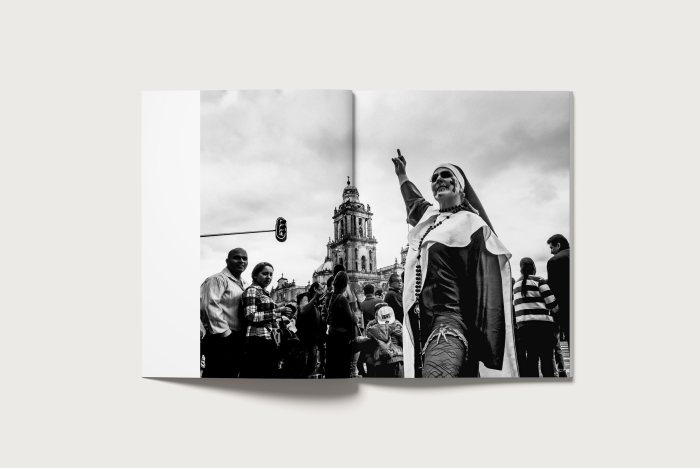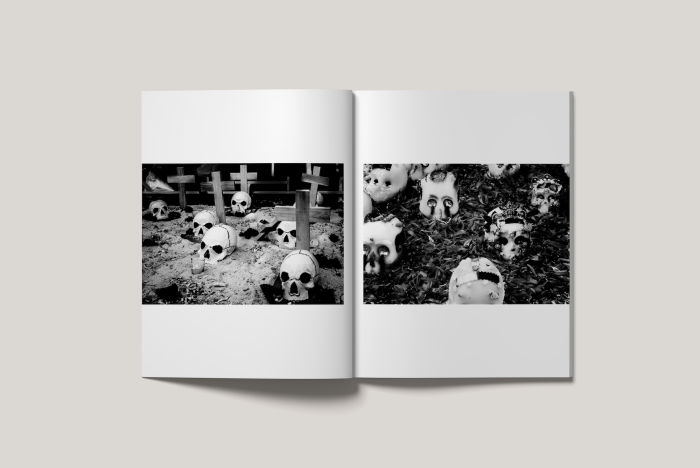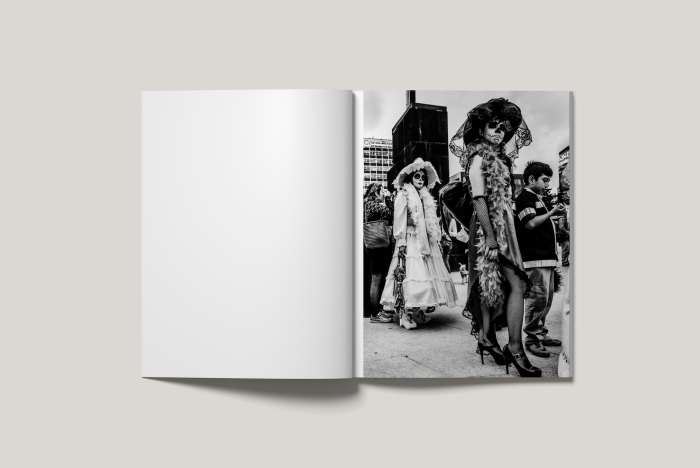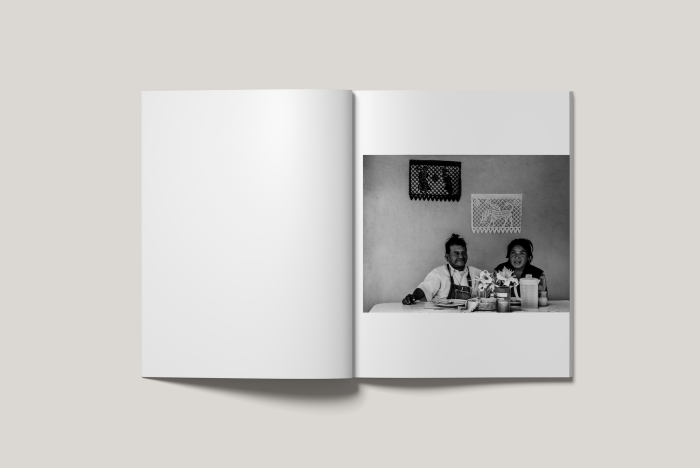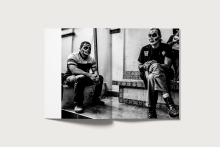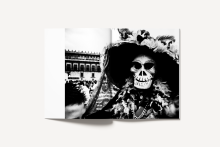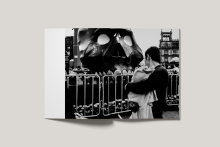«
<
>
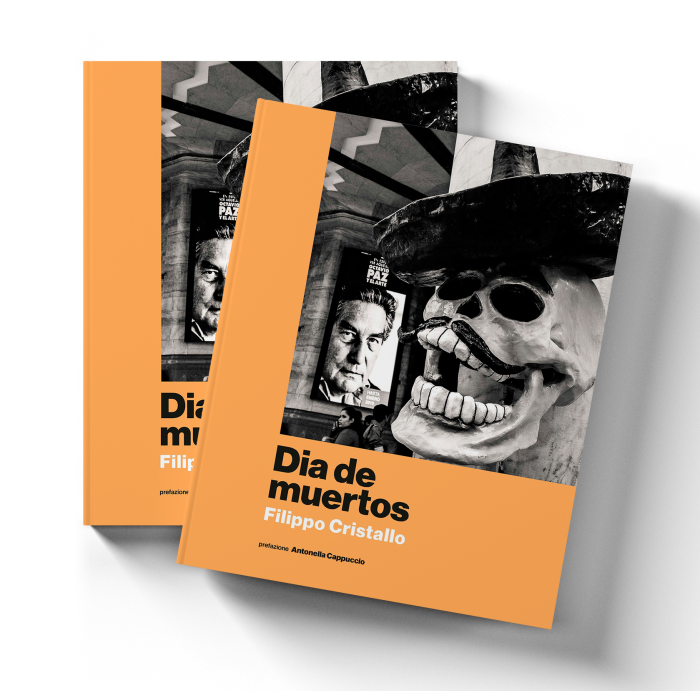 buy / cart
1 / 8
enlarge
slideshow
buy / cart
1 / 8
enlarge
slideshow

dia de muertos
ita
Questa pubblicazione, dedicata al Dia de Muertos contiene una selezione di fotografie realizzate a Città del Messico e nei comuni di Toluca e Metepec. L’intento è quello di restituire l’eccezionalità di una festa particolarmente sentita dal popolo messicano, frutto di una concezione diversa della morte che è al tempo stesso una diversa concezione della vita, se paragonata a quella nordamericana ed europea.
La rappresentazione della morte è uno dei tratti caratteristici più importanti dell'espressione dell'identità messicana. Dalla ritualità dei sacrifici umani in epoca pre-ispanica alle celebrazioni festive del Giorno dei Morti che oggi affollano luoghi pubblici e privati in tutta la Nazione, il rapporto con l’aldilà ha sempre aperto lo spazio sincretico di una geografia culturale che, amalgamando sacralità e ironia, ha saputo costruire un dialogo ininterrotto tra spiritualità indigena e tradizione cristiana. Esorcizzata, celebrata e santificata nello spirito, la morte fa parte di quel flusso di immagini mistiche che, dalla frontiera settentrionale alle giungle del Chiapas, hanno saputo disegnare i contorni della sfera ontologica nazionale.
La commemorazione dei defunti in Messico è inverosimilmente un’esplosione di vita che si manifesta come un’enorme parata carnevalesca lugubre e surreale, durante la quale si beve, si canta e si offrono doni ai defunti con i quali ci si ricongiunge allegramente. In aggiunta alla straordinaria partecipazione popolare, questo reportage ambisce a raccontare anche le diverse declinazioni dei festeggiamenti, come nel caso della capitale che diventa in quei giorni teatro di rivendicazioni politiche e sociali per le vittime di episodi di storia recente.
Gli scatti selezionati, realizzati durante le celebrazioni, testimoniano la complessità della festività senza cedere al folklore delle maschere configurandosi come una combinazione di fotografia documentaria e ricerca formale. La scelta del bianco e nero, che gioca sugli effetti della luce e sui forti contrasti rende più
potenti ed evocative le immagini e al tempo stesso rafforza il loro carattere narrativo catturando l'essenza della tradizione
eng
This publication, dedicated to Dia de Muertos, contains a selection of photographs taken in Mexico City and in the municipalities of Toluca and Metepec. The intention is to restore the exceptionality of a feast particularly felt by the Mexican people, which is the result of a different conception of death that is at the same time a different conception of life, when compared to the North American and European one.
The representation of death is one of the most important features of the expression of Mexican identity. From the rituality of human sacrifices in pre-Hispanic times to the festive celebrations of the Day of the Dead that today crowd public and private places throughout the nation, the relationship with the afterlife has always opened up the syncretic space of a cultural geography that, by blending sacredness and irony, has been able to build an uninterrupted dialogue between indigenous spirituality and Christian tradition. Exorcised, celebrated and sanctified in spirit, death is part of that stream of mystical images that, from the northern frontier to the jungles of Chiapas, have been able to draw the contours of the national ontological sphere.
The commemoration of the dead in Mexico is improbably an explosion of life that manifests itself as a mournful and surreal carnivalesque parade, during which people drink, sing and offer gifts to the deceased with whom they are cheerfully reunited. In addition to the extraordinary popular participation, this reportage also aims to recount the different declinations of the celebrations, as in the case of the capital city, which during those days becomes the scene of political and social claims for the victims of episodes in recent history.
The selected shots, taken during the celebrations, testify to the complexity of the festivity without giving in to the folklore of the masks, configuring themselves as a combination of documentary photography and formal research. The choice of black and white, which plays on the effects of light and strong contrasts, makes the images more powerful and evocative.
evocative images and at the same time reinforces their narrative character, capturing the essence of the tradition.
Questa pubblicazione, dedicata al Dia de Muertos contiene una selezione di fotografie realizzate a Città del Messico e nei comuni di Toluca e Metepec. L’intento è quello di restituire l’eccezionalità di una festa particolarmente sentita dal popolo messicano, frutto di una concezione diversa della morte che è al tempo stesso una diversa concezione della vita, se paragonata a quella nordamericana ed europea.
La rappresentazione della morte è uno dei tratti caratteristici più importanti dell'espressione dell'identità messicana. Dalla ritualità dei sacrifici umani in epoca pre-ispanica alle celebrazioni festive del Giorno dei Morti che oggi affollano luoghi pubblici e privati in tutta la Nazione, il rapporto con l’aldilà ha sempre aperto lo spazio sincretico di una geografia culturale che, amalgamando sacralità e ironia, ha saputo costruire un dialogo ininterrotto tra spiritualità indigena e tradizione cristiana. Esorcizzata, celebrata e santificata nello spirito, la morte fa parte di quel flusso di immagini mistiche che, dalla frontiera settentrionale alle giungle del Chiapas, hanno saputo disegnare i contorni della sfera ontologica nazionale.
La commemorazione dei defunti in Messico è inverosimilmente un’esplosione di vita che si manifesta come un’enorme parata carnevalesca lugubre e surreale, durante la quale si beve, si canta e si offrono doni ai defunti con i quali ci si ricongiunge allegramente. In aggiunta alla straordinaria partecipazione popolare, questo reportage ambisce a raccontare anche le diverse declinazioni dei festeggiamenti, come nel caso della capitale che diventa in quei giorni teatro di rivendicazioni politiche e sociali per le vittime di episodi di storia recente.
Gli scatti selezionati, realizzati durante le celebrazioni, testimoniano la complessità della festività senza cedere al folklore delle maschere configurandosi come una combinazione di fotografia documentaria e ricerca formale. La scelta del bianco e nero, che gioca sugli effetti della luce e sui forti contrasti rende più
potenti ed evocative le immagini e al tempo stesso rafforza il loro carattere narrativo catturando l'essenza della tradizione
eng
This publication, dedicated to Dia de Muertos, contains a selection of photographs taken in Mexico City and in the municipalities of Toluca and Metepec. The intention is to restore the exceptionality of a feast particularly felt by the Mexican people, which is the result of a different conception of death that is at the same time a different conception of life, when compared to the North American and European one.
The representation of death is one of the most important features of the expression of Mexican identity. From the rituality of human sacrifices in pre-Hispanic times to the festive celebrations of the Day of the Dead that today crowd public and private places throughout the nation, the relationship with the afterlife has always opened up the syncretic space of a cultural geography that, by blending sacredness and irony, has been able to build an uninterrupted dialogue between indigenous spirituality and Christian tradition. Exorcised, celebrated and sanctified in spirit, death is part of that stream of mystical images that, from the northern frontier to the jungles of Chiapas, have been able to draw the contours of the national ontological sphere.
The commemoration of the dead in Mexico is improbably an explosion of life that manifests itself as a mournful and surreal carnivalesque parade, during which people drink, sing and offer gifts to the deceased with whom they are cheerfully reunited. In addition to the extraordinary popular participation, this reportage also aims to recount the different declinations of the celebrations, as in the case of the capital city, which during those days becomes the scene of political and social claims for the victims of episodes in recent history.
The selected shots, taken during the celebrations, testify to the complexity of the festivity without giving in to the folklore of the masks, configuring themselves as a combination of documentary photography and formal research. The choice of black and white, which plays on the effects of light and strong contrasts, makes the images more powerful and evocative.
evocative images and at the same time reinforces their narrative character, capturing the essence of the tradition.

Pages: 128
Size: 30x23 cm
Introduction Antonella Cappuccio
language italian/English
Price: 25,00 Euro
publication 2023
Self publisher
ISBN 979-12-21453-46-1
Size: 30x23 cm
Introduction Antonella Cappuccio
language italian/English
Price: 25,00 Euro
publication 2023
Self publisher
ISBN 979-12-21453-46-1


